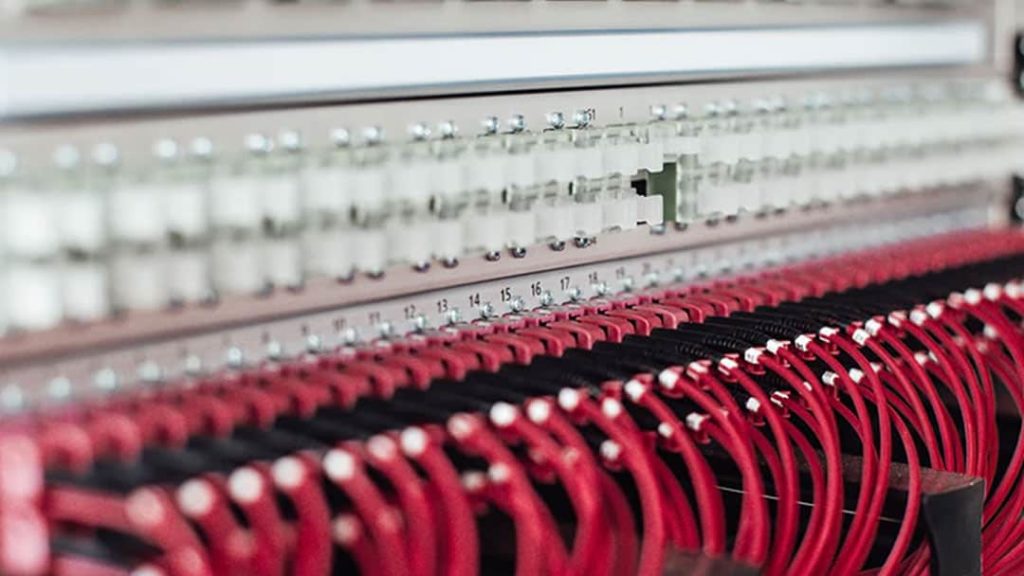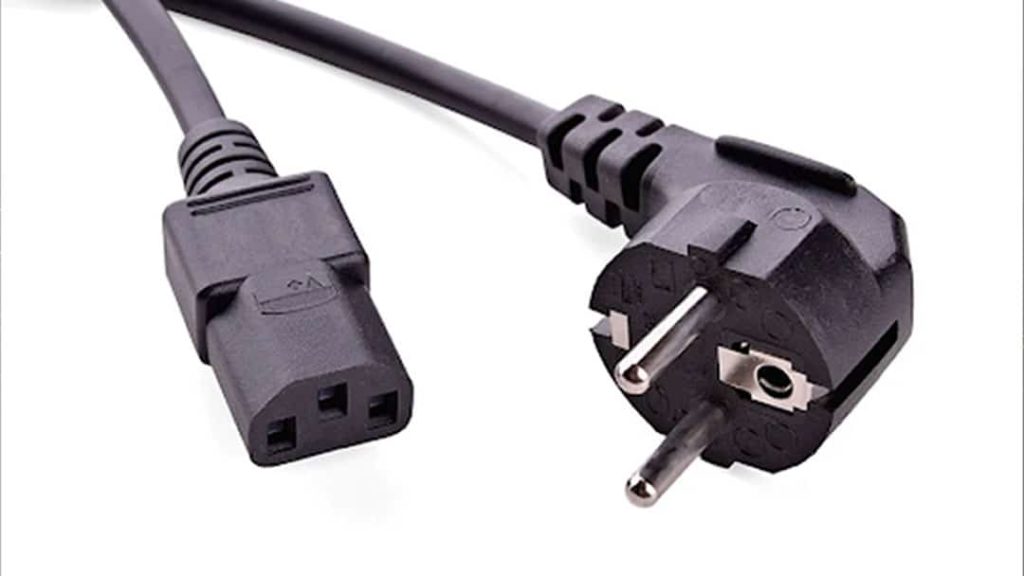It’s important to ensure your infrastructure is regularly organized and protected from environmental risks. Data center cabinets are essential components for organizing and protecting the equipment in any server room or storage area; they provide efficient storage solutions that help you maximize space utilization while keeping hardware secure. In this blog post, we’ll take a comprehensive look at the features and benefits of implementing high-performance data center cabinets into your IT architecture. You’ll learn how these cabinet solutions aid with organization, threat protection, cost savings, energy efficiency, as well as discover our recommendations on which type of cabinet may best suit your facility’s needs.
Related Link: Data Center Maintenance Operations & Best Practices
Racks vs. Cabinets: Understanding the Basics
A rack is an open frame structure designed to hold multiple electronic equipment modules, such as servers and IT equipment. It typically features rails, bars, hooks, or pegs for mounting the equipment securely. On the other hand, a cabinet is similar to a rack in that it can also hold multiple equipment modules. However, unlike racks, cabinets are fully enclosed on all sides, including side panels, a roof, and front and rear doors. Cabinets are also referred to as closed frame racks.
Looking to elevate your business to the next level? Contact us today to see how C&C Technology Group can help!
Advantages and Drawbacks of Racks

Open frame racks continue to be a viable solution for many data center deployments, offering a range of benefits. Some advantages of racks include:
- Versatile Applications: Racks can support various equipment, including switches and servers, and provide a platform for cable patching. They offer flexibility for different applications within the data center.
- Unobstructed Airflow: The open design of racks allows for unobstructed airflow, promoting efficient cooling and heat dissipation for the equipment.
- Easy Access: Racks provide easy access to equipment and cabling sections, making maintenance tasks, such as moves, additions, or changes, more convenient and time-efficient.
- Effective Cable Management: Racks enable the use of wide and deep vertical cable managers along both sides, facilitating efficient cable management within the data center.
- Cost-Effective: Racks are generally more cost-effective than enclosed cabinets, making them a practical choice for organizations with budget constraints.
However, there are some drawbacks to consider when using racks:
- Security Concerns: The easy accessibility of racks can pose a security risk, as potential unauthorized access could lead to damage or tampering with the equipment.
- Exposure to Contaminants: In an open rack environment, active equipment is exposed to contaminants such as dirt and debris, which may affect their performance and longevity.
- Aesthetics and Maintenance: Exposed cables and cable managers in racks can result in poor aesthetics, especially if not properly maintained. It is important to prioritize regular cable management to maintain a clean and organized appearance.
Related Link: Data Center Cleaning Best Practices for 2023
Advantages and Challenges of Cabinets
Cabinets, also known as closed frame racks, have gained popularity in data centers for two significant reasons:
Air Segregation Strategies: Cabinets offer a straightforward and effective approach to various air segregation strategies, including Hot Aisle Containment, cabinet-level containment, and Cold Aisle Containment. These strategies play a crucial role in optimizing cooling efficiency and ensuring proper airflow management within the data center.
Enhanced Security: Cabinets provide higher physical security levels compared to racks. They offer different types of locking systems to enhance protection against unauthorized entry, safeguarding valuable equipment and sensitive data.
While cabinets offer these advantages, they also come with their own set of challenges:
Installation and Maintenance Complexity: The enclosed structure of cabinets requires more effort and administrative coordination during installation and maintenance. Restricted accessibility can result in higher administrative overhead.
Higher Costs: Enclosed cabinets generally come with higher costs, which may be prohibitive for small-scale data centers, start-ups, or organizations with budget limitations.
Understanding Cabinet Sizes
Cabinets come in various shapes and sizes, with industry standards defining their width, depth, and height. The size of a cabinet is typically specified by its width and depth in millimeters, such as 800mm x 1000mm, while the height is measured in rack units (U).
A rack unit is the standard measurement of height in a data center. It is commonly referred to as “U” or “RU” and is equivalent to 1.75 inches (4.45 centimeters) in height. The EIA-310 standard defines the rack unit as the usable vertical space for rack-mounted equipment. This measurement allows for consistent sizing and compatibility between different equipment manufacturers.
The width and depth of standard data center racks may vary slightly by manufacturer, but the industry standard is 19 inches (48.26 centimeters) wide and 36 inches (91.44 centimeters) deep. This standard width is based on the outer dimension of the equipment mounting rail and is widely accepted across the industry. Manufacturers often specify their equipment as being “19-inch rack-mountable” to ensure compatibility with standard racks and cabinets.
The height of a cabinet is measured in rack units and represents the vertical space available for equipment installation. Common cabinet heights include 42U, 45U, and 48U, with each U representing 1.75 inches (4.45 centimeters) of height. For example, a 42U cabinet provides 73.5 inches (186.69 centimeters) of vertical space for equipment mounting.
When choosing the size of a cabinet, several factors should be considered. The width dimensions can vary based on the airflow and need to manage cables and patch cords. The depth of the cabinet depends on the intended use and the dimensions of the equipment to be installed. It is important to ensure that the cabinet is deep enough to accommodate the equipment without any protrusions or obstructions.
The height of the cabinet should be determined based on functionality and equipment loading. It is essential to consider the floor-to-ceiling height of the data center to avoid any space constraints. Data center designers are increasingly demanding higher rack unit capacities, with 47U and 52U cabinets gaining popularity to maximize equipment density and optimize floor space utilization.
Cabinet Usage Strategy in the Data Center

The strategy for cabinet usage in a data center can vary depending on the type of data center and its specific requirements. Two common scenarios include:
- Enterprise Data Centers: These data centers are owned and used by a single organization. In this case, the usage strategy for cabinet space is an internal decision based solely on the enterprise’s needs. A holistic view of floor space planning can be taken to maximize equipment capacity and optimize the data center layout.
- Colo (Colocation) Data Centers: Colo data centers lease space to multiple external agencies or clients. In these scenarios, cabinet usage needs to consider segregation requirements due to data sensitivity and security concerns. The customer, rather than the data center operator, often specifies the cabinet functionality and design to meet their specific requirements.
Looking for help with implementing workplace technology for your business? Contact us to get assistance today!
Organizing Your Data Center Infrastructure
Data center cabinets play a crucial role in organizing and protecting electronic equipment within a data center environment. Racks and cabinets offer different advantages and drawbacks, and choosing the right solution depends on factors such as airflow management, security needs, budget constraints, and maintenance considerations.
By considering the specific requirements of your data center and the benefits offered by racks and cabinets, you can make an informed decision to organize and protect your infrastructure with efficiency. Whether you opt for an open rack or an enclosed cabinet, prioritizing proper cable management, security measures, and cooling strategies will contribute to a well-organized and efficient data center.
Related Link: Data Center Corrosion: How to Prevent & Control It
Last Updated on June 8, 2023 by Josh Mahan




